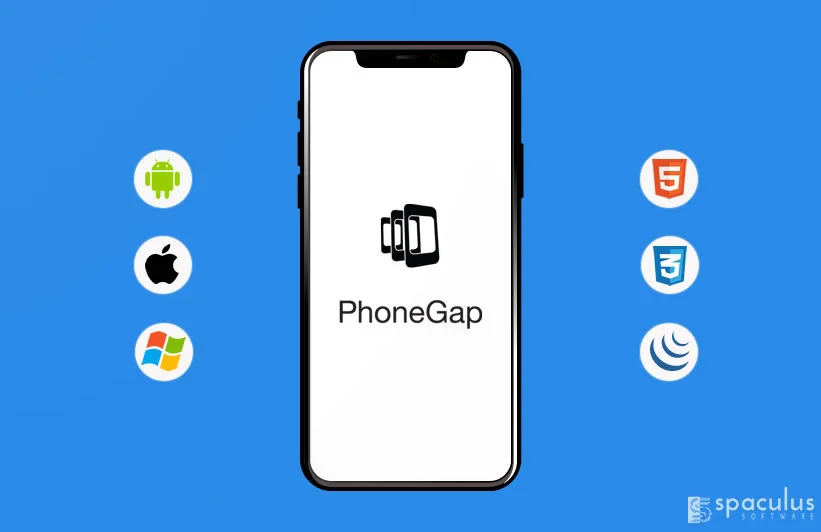Top Amazing Pros And Cons of Phonegap App Development

PhoneGap is a generally received innovation for cross-platform mobile application improvement. This open source mobile application improvement system has been created by Nitobi Software (presently Adobe). It enables developers to assemble applications utilizing HTML, JavaScript, and CSS. The PhoneGap Developers app is a testing utility for web developers and designers using the PhoneGap framework. After installing the PhoneGap Developers application you can connect with your PhoneGap desktop application to immediately view and test your project on the gadget.
PhoneGap was first named as “Apache Cordova” which was presented by Nitobi. Adobe obtained Nitobi and renamed Apache Cordova as “PhoneGap”.
There are two segments to PhoneGap:
1. A JavaScript API which is the interface between the native functionality, for example, camera, geolocation and contacts, and the HTML5/CSS code.
2. Local code which is invoked by the JavaScript APIs.
Positive Sides
1. Two advantages in one go
Clearly, PhoneGap is outstanding for cross platform capabilities, so you can build up a single application, and send it over every mobile platform. This is an immense success for both the developer and the business, because within the shortest possible Time To Market, their product is on the roll. Less effort, less time and less cash!
2. Release uniform items over all platforms
Consistency was a prime issue that businesses looked in the initial stages of product development as they were not able to discharge uniform functionalities over all the mobile platforms. An application created for iPhone may look different in Android and vice versa. The framework makes it conceivable to have uniformity through the system of cross-platform application development.
3. No compelling reason to employ master designers
Local application improvement required experts who might most likely work just to create items for a particular platform. But, PG makes it lucky for businesses because just working knowledge of Javascript, CSS3 and HTML5 would be perfect to make cross-platform applications. Furthermore, this you can get in-house also. It’s uplifting news for the developers too because they don’t need to learn a new language to use this framework.
4. Each application can act like native applications
An application acts like native application when it takes advantage of the cell phone’s equipment and utilize properties like geolocation, camera, accelerometer, etc. This system takes advantage of these equipment abilities and gives amazing UX all the while. Indeed, the client would hardly realize that it is a cross-platform one.
5. Powerful Backend
The exceptionally strong backend framework helps in fast product development and this reduces development efforts. However, if you are a learner in the field of development, you can refer to PhoneGap’s beginner’s guide for ability to development advancement process. A robust backend resembles having solid roots because it truly influences the performance of your application.
6. Open Source
With its open source permit, the system is basically free. What’s more, there is an enormous and developing network of developers that uploads details of new codes and modules, making simpler for newcomers.
7. Backed by Apache, Powered by Apache Cordova
Being a distribution of Apache Cordova, PhoneGap developers are controlled by it, and contains a few extra instruments that tie into different services of Adobe. Therefore, you can likewise say that Adobe backs the technology. Thus, PhoneGap powers AEM portable (Adobe Experience Manager), through which developers focus on multiple platforms. Through AEM Mobile, projects can deal with any activity of their mobile applications from a single spot. With the assistance of PhoneGap module Content Sync, you can get and reserve your application’s content. AEM Mobile Verify is additionally controlled by this technology and this encourages you to test and see the progressions you make on an application. The tests can be performed on both iOS and Android devices.
8. Simple to work plugins
The PhoneGapnative-app container, PhoneGap Build supports a few PhoneGap or Cordova plugins, helping in broadening the native functionalities while developing applications..Some of the well-known recent plugins in the repositories are StatusBar, PushPlugin, Barcode Scanner, Social Sharing, GAPlugin, Facebook Connect and Pushwoosh.
Potential Disadvantages
PhoneGap developers did well job because it has less drawbacks than its pros
1. Doesn’t support Plugins with hooks
PhoneGap Builds don’t support plugins with hooks, so at specific occasions that can block with the functionality. For instance, there are hooks in WordPress that encourages the developer to tie their code with the centre code base, plugins and themes in WP. Also, PGBuilds doesn’t support Cordova snares.
2. Not appropriate for hardware intensive apps
PG, with all its complexity of plugins and APIs may fail to deliver while building up a gaming application. The gaming developers are probably going to encounter ‘stop’ and ‘drop’ issues after message pop-up from their applications.
3. Need a Mac for creating iOS applications
PhoneGap developers can’t build up an iOS program without downloading iOS SDKs, and this is not possible without a Mac. However, you can counter with limitation with the assistance of PG Builds as it can arrange your build and return the final file.
4. Plugins could be outdated
Sometimes, the Plugins in PG could be outdated, and this could hinder with application functionality. Furthermore, for certain features, you don’t have a related Plugins. For instance, geolocation in your application may not work ideally, or the camera may not function admirably. You may understand this lone part of the way through the task, and that is not an option for many enterprises.
Tags
Categories
- API Integration (2)
- App Development (35)
- Artificial Intelligence - Spaculus Software (23)
- Blog Categories (8)
- Business Analytics (9)
- Cloud Computing (5)
- Digital Marketing (9)
- Ecommerce (3)
- IOT (7)
- Latest Updates (20)
- Live Streaming (2)
- Marketing Automation (1)
- RPA (2)
- Tech World (21)
- Uncategorized (1)
- Web Design (13)
- Web Development (22)







